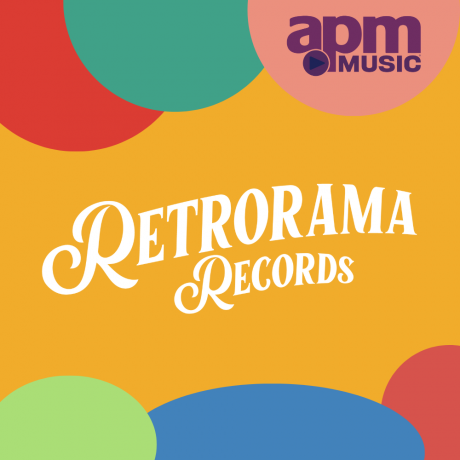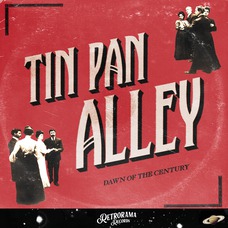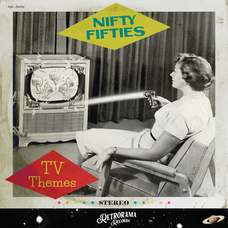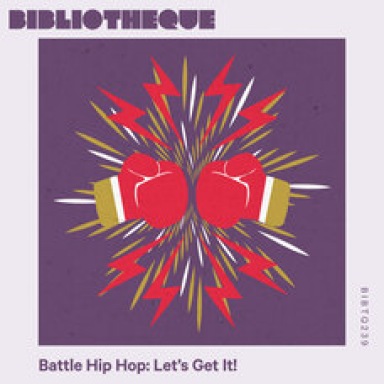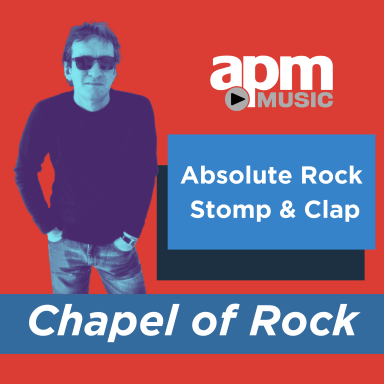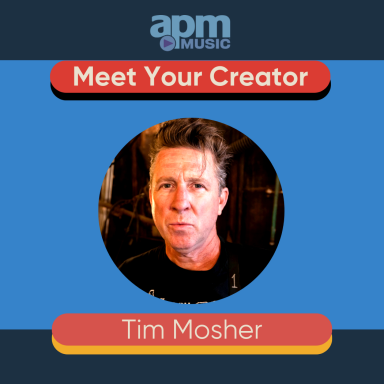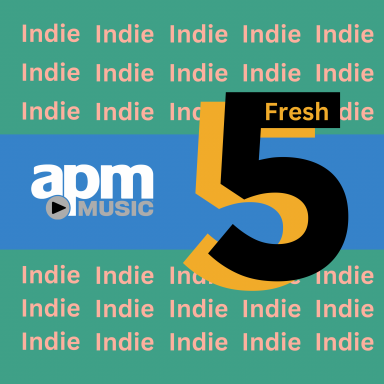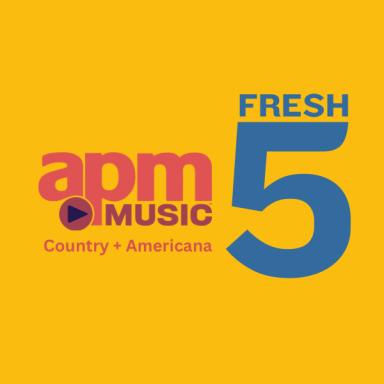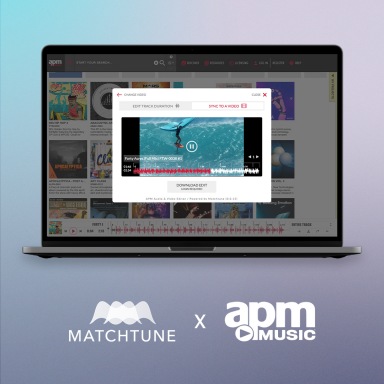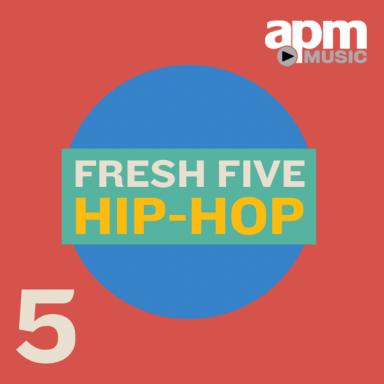Introducing Retrorama Records: Vintage Sound, Modern Recording Flexibility
History is documented in many ways: the written word, visual artifacts, and music that embodies the times and culture of a specific place. Vintage music triggers an immediate emotional response, acting like a time machine to transport the listener. Therefore, it is no surprise that the popularity of licensing vintage recordings is at an all-time high. Scarcity, authenticity, and the alluring promise to step back fifty years contribute to the trend.
However, there are limitations to licensing these recordings due to audio being recorded in mono, sound quality issues, and the lack of available stems. Tape deteriorates over time and can reduce the audio quality of these recordings if not digitized properly or in a timely manner. Stereo audio recording techniques took over the music industry around 1970, and music was recorded to tape until the dawn of ProTools and Cubase in the 1990s. In the world of digital media, high fidelity and having flexibility with audio stems are a must.
Retrorama Records has blended the best of both worlds by capturing the history and sounds of music recorded in bygone eras with the high fidelity and stems access of today. Once founders David Grow and Ryan Claus moved to Nashville, the hub for all things music, they started building a music library. Their commitment to preserving the sounds and traditions of songwriting for each era is carefully crafted using authentic gear from the period and recording techniques to capture just the right sound.
I sat down with founders David Grow and Ryan Claus and their Production Assistant, Jonny Therrien, to give us the history of Retrorama Records and outline how they successfully craft music that could pass as true vintage recordings.
Tell me about how you came up with the idea for Retrorama Records.
David Grow (DG): I have wanted to be a rock star ever since I can remember. I was self-taught on the piano, and by the time I was in high school was playing professionally in piano bars in my hometown of Chico, CA. I fronted my own band through college and, shortly after graduating (with a marketing degree, go figure), moved to L.A. where I starved and struggled to get a record deal. To make ends meet, I did some acting on some TV shows. I was actually more of a human prop, but eventually, I found part-time work at a commercial music house, where I got my first taste of scoring commercials.
I finally got a record deal (while working at the music house), went on tour, garnered a surprising amount of airplay (we were on the charts for over 33 weeks), had hit songs, wrote and produced hit songs for other artists, was hired by a big, bi-coastal music house to compose for them, got another record deal, wrote and produced that record only to have my Rock label switch to Smooth Jazz the very day I turned in my second record.
I didn't want to go back to the music houses I had forsaken for my glorious artist career, but I would have to write a bunch of new songs to get another record deal, and that would take time. Instead, more or less, on a whim, I asked a friend if she wanted to start a music house with me. She said that she knew nothing about the custom music for advertising business but seemed keen to give it a go.
In our first five months in business, we had no jobs and no leads. This looked like a disastrous blunder. Then on Halloween night in 1999, we got our first job. Since then, we've scored close to a thousand spots for many of the biggest brands in the world, like Nike, Mercedes, BMW, Ford, Intel, Google, Toyota, McDonald's, Chevy, Nissan, Levi's, HP, Volkswagen, UPS, and 8908 others.
Our paths are not always straight ones. It sounds like you have been on quite the journey! Where did your passion for creating retro music come from?
DG: In our second year of existence, a client asked if we could create a piece of music that sounded exactly like it was written and recorded in 1934. We said yes but were unsure as to what they were focusing on. Arrangement? Composition? Production? Maybe all of the above.
We were nervous we might screw this up, so to be safe, we found musicians who could play in the style of the 1930s (and owned vintage instruments), found a studio that had a similar sound stage to those used in the 1930s, and generally got very tweaky with the whole project. In the end, the recordings sounded dead-on, and our client flipped out. Pretty soon, word got out that we were good with period music.
It helped that I was raised partly by very musical grandparents who had music playing night and day. They loved Ragtime, Early Swing, Jazz standards, Showtunes, Classical music, Opera, Hawaiian Music; you name it. This music got into my DNA, apparently, so I was a good candidate to be a creative lead on Retrorama. The rest is history.
Creating music to sound like a specific era really does benefit from using instruments and gear made in the specific era you are emulating. What are some of the vintage instruments and recording gear you like to use to create these sounds? Talk nerdy to me.
DG: I cut my musical teeth on analog tape and was thrilled when digital made everything way better. We suddenly had all kinds of headroom, non-existent noise floors, no such thing as THD, tape hiss, or a dozen other things that digital instantly cured. I had one of the first O2Rs on the market and was quick to adopt ProTools when that became available. ProTools allowed us to work much faster, which in our business is critical. I had some "purist" engineer friends who bemoaned the "sterility" of digital, but I brushed that off. I was fully converted.
Then I moved to Nashville.
When we arrived in 2005, ProTools was not quite the standard it was in L.A., and feeling superior, I found this quaint. But the players in Nashville are truly second to none, and some of my L.A. bravado gave way to the realization that I was among the players who knew more about music (and music technology) than I ever would. They schooled me on how transduction really works. They had a deep reverence for "the right" microphones (and mic placement), which in my mind, was the nerdy domain of engineers only. Recording environments, signal paths, and recording together in a room seemed like arcane ideas I couldn't be bothered with. But gradually, I realized how wrong I was.
So, yes, I love working on the Trident console at Dark Horse Studios in Franklin, in particular. It has Neve channels (tweaked back in the day by Rupert himself) and sounds like a dream. No automation here, but you get that inexplicable fatness technically caused by transformers distorting just a tiny bit (along with modulation noise if we're recording on analog tape).
My favorite vocal mic is usually the Neumann U 87, and yes, they have Telefunken 47s in town from the 1950s, which sound amazing. I've learned about the trippy dynamics of ribbon and tube mics and the importance of not over-compressing everything! In my home studio, I have an LA2A, a bunch of tube mic preamps and equalizers, a distressor, and some old mics, including the U87 previously owned by David Pack from Ambrosia. He used it to record most of their big hits from the 70s.
So yes, I still use ProTools for some things, but I am fully back on analog tape again. I'm also using analog consoles, tube mic preamps, and vintage microphones as never before. And I find that Nashville is the perfect place to launch a retro-music label like Retrorama since this place is shit-hot groovy.
There is no substitute for the gear and audio techniques that brought us the best music ever recorded. Tell us about some of your favorite tracks or albums in the Retrorama catalog and the stories behind them.
DG: I was partially raised by very musical grandparents, and their music became my music. So, I suppose there is, for me, an element of nostalgia when it comes to a lot of Retro music. But Tin Pan Alley is an example of one of my favorites not only for being a nostalgic favorite but also for its historical significance.
Tin Pan Alley was a real place in New York where the earliest music publishing companies began to thrive. This happened in the aughts and early teens of the last century and represented the birth of music publishing as a viable business. It was also directly connected to one important economic fact that existed here in the US: most families owned a piano in their homes.
This was before radio, and Victrola players, while widely available, were expensive, often had mechanical issues, and never sounded very good. But parlor pianos, previously available only to the very rich, were now accessible to most families. And since these families had a piano, they needed music to play. Cue the writers at Tin Pan Alley.
A host of amazing songs were written to be played by pianists of average skill on their home pianos, and this was often the first time the listener ever heard the music! So, songs like "After the Ball," "She's Only a Bird in Gilded Cage," Waltz Me Around Again, Willy," and many more were written specifically for this use. Publishers were selling sheet music at local Five and Dime stores all around the country, and these songs became the first real pop music in this country. For our album, we found examples of early recordings of these songs (again, played on solo piano with a single vocal accompaniment), and based our arrangements on those to give the songs the most authentic rendering of how they would have first sounded to listeners.
Nifty Fifties (1950s TV Theme songs) would probably be near the top of my personal favorites.
RTRO-0201 Nifty 1950s TV Themes
The Fifties TV Show themes album speaks for itself. This music wanted to present a hypertrophic friendliness and fun that, in any other context, would make most people run from the room screaming. But on TV (think theme song to Leave It to Beaver), it was amazing in its kitschy-cool, swagger of fun.
Jonny Therrien: "Soul Boat to Love" - This track is on the Classic 70s Soul with Vocals album, and when it starts, it's like an immediate transportation back in time. I love the wobbly guitar sounds, the glow of the strings, and the warm drum tones. It feels like an unreleased track from a Marvin Gaye record. Also, on the nerdy side of things, I'm a sucker for songs that have a melody and chord changes over an almost entirely static bass line. That's such a cool sound!
"The Get Down" is a track from the Old-School Hip-Hop album. My favorite thing about 90s hip hop is the way that the music can often feel like a chaotic mosaic of sounds but can still function as a song. A looped beat, intense vocal fills, weird orchestral samples, and thick synthesized bass read like a laundry list of aggressive noises, but the songs from that era are so undeniably cool and creative. That's what I think about when I listen to "The Get Down."
These songs and albums slap. I agree! What can we expect from Retrorama in the future?
When we started what was to become Retrorama, we had no idea whether or not people would value (or understand) what we were trying to do. The concept is straightforward, but maybe as geeky music freaks (who also love the history of popular music), this whole Retrorama thing was us getting high on our own supply? We love the challenge of going to bizarre lengths to make things sound exactly like they were created in other eras, but were we wasting our time since most people probably couldn't care less? However, it turns out that a surprisingly large number of people do care and can hear the difference. So, we will continue to enthusiastically create music for those geeky souls, wherever they may be, who we now consider part of our Retrorama family!
The ways in which we capture sound have evolved dramatically over the past 150 years. The earliest sound recordings have been credited to Parisian inventor Edouard-Leon Scott de Martinville in 1860. His invention called a "phonautograph," captured the first sound recording ever created, which was Scott singing the popular French folk song "Au Clair de la Lune." This device worked by attaching a stylus to a thin vibrating membrane that captured sound waves onto paper or a glass plate blackened by smoke. It took over 100 years to hear what his first recording sounded like. Thomas Edison's "talking machine" was the first device that could both record and playback sound in 1877.
By Sarah Scarlata
